
 While in many cases significant investments are made, the Community Impact portion of our CiCi Awards celebrates economic development projects that have a profound positive affect on the quality of life for the citizens who inhabit the regions in which the developments are located, and the many who find employment because of these establishments, whether directly or indirectly.
While in many cases significant investments are made, the Community Impact portion of our CiCi Awards celebrates economic development projects that have a profound positive affect on the quality of life for the citizens who inhabit the regions in which the developments are located, and the many who find employment because of these establishments, whether directly or indirectly.
The types of projects in which Community Impact honorees are involved are also a consideration as many will have a long-term impact. As you will notice, projects that affect the environment and clean energy production proliferate in our Community Impact awards. NaturEner in Montana (wind energy), Wiregrass Power in Valdosta, Georgia (renewable energy power plant), Saft America in Jacksonville, Florida (lithium-ion cells and batteries), Bannon Automotive, LLC, in Clay, New York (plug-in electric vehicle manufacturing) and Brooklyn Navy Yard Development Corporation in Brooklyn, New York (multi-tenant Green Manufacturing Center) are all notable examples.
In addition, it is encouraging to see that companies such as Foster Farms (Farmerville, Louisiana), Saft America (Jacksonville, Florida), Brooklyn Navy Yard Development Corporation (Brooklyn, New York) and General Electric (Van Buren Township, Michigan) are revitalizing existing facilities, thus minimizing their earthly carbon footprint.
At the core of the Community Impact awards is the retention and creation of jobs through corporate development and investment. Each of our 15 winners has made a positive, personal financial difference in the lives of their employees. Whether it is the 155 new jobs created by Wiregrass Power in Valdosta, Georgia, or the 600 jobs created by Alliant Techsystems in Iuka, Mississippi, every job has an impact.
Commenting on Red Ventures’ expansion in Fort Mill (which will ultimately result in 1,000 new high-paying jobs over the next five to seven years), South Carolina Senator Mick Mulvaney said, “Every job counts, 100 this year and reaching 1,000 in the years to come.”
Understanding the criticality of jobs in their region, economic development teams cited in our award highlights have fought valiantly to bring development and thus job creation and/or retention to their communities. Troy, Alabama, Lyons, Georgia, Greene, New York, Clayton, North Carolina and Fond du Lac, Wisconsin are shining examples of areas that could have been devastated were it not for these efforts.
For corporate development executives, all of the areas highlighted may inspire you to include them in your short-list of considerations for your next project.
NaturEner USA
Toole and Glacier Counties, Montana
NaturEner, through its Glacier Wind farm, has become an important member of the community in north central Montana. With millions of dollars of investments and hundreds of jobs created, the project has brought a much-needed economic boost to the region. The projected ongoing economic infusion will continue to make a lasting impact on the community.
“This wind farm is one of the reasons Montana is on the map as a leader in wind energy development,” said Governor Brian Schweitzer. “With a total of 210 megawatts, this is a significant contribution of clean and green domestic energy to our region.”
At 210 megawatts, the $500 million Glacier Wind Farm, which is located in Toole and Glacier counties, is now Montana's largest, surpassing the 135-megawatt Judith Gap wind farm in Wheatland County.
NaturEner USA began construction of the Glacier Wind Farm near Shelby in 2008. It was built in three phases. The official ground breaking of the first phase was on July 17, 2008. The 106.5 megawatts of power from that phase went online at the end of October 2008.
Another 103.5 MW completed construction in October 2009. The plan includes an additional 300 MW of generation capacity in phase three at another nearby wind site known as the Rim Wind Farm to connect to the Montana Alberta Tie Line (MATL) transmission line.
NaturEner invested $400 million of its own money in this project. It is estimated that the project created 970 construction and permanent jobs and saved 25 additional jobs.
San Diego Gas and Electric, an investor-owned utility in California that serves 1.2 million customers, is purchasing some of the power produced at the Glacier Wind Farm.
Talecris Biotherapeutics
Clayton, North Carolina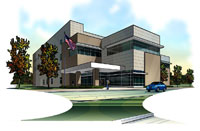 International biopharmaceutical company Talecris Biotherapeutics is expanding its manufacturing facilities in Johnston County just outside the town of Clayton, North Carolina creating 259 new jobs over the next seven years and investing $268.7 million. The announcement was made possible in part by state Job Development Investment Grant and One North Carolina Fund awards and is contingent upon approval of local incentives.
International biopharmaceutical company Talecris Biotherapeutics is expanding its manufacturing facilities in Johnston County just outside the town of Clayton, North Carolina creating 259 new jobs over the next seven years and investing $268.7 million. The announcement was made possible in part by state Job Development Investment Grant and One North Carolina Fund awards and is contingent upon approval of local incentives.
Talecris Biotherapeutics discovers, develops and produces critical-care treatments for people with life-threatening disorders in the areas of immunology, neurology, pulmonology and hemostasis. The company employs about 4,700 worldwide with headquarters in the biotech hub of Research Triangle Park (RTP), North Carolina. With more than 1,800 full-time workers currently employed in Johnston County, Talecris is one of the county’s largest employers and a Top 10 employer in RTP.
Talecris has remained committed to North Carolina as it has grown, adding more than 200 jobs in the state in 2009 alone. The 259 new jobs that will be created in Johnston County will pay an overall average annual salary of $51,066, not including benefits, which is higher than the Johnston County average of $33,800. “The competition for these types of jobs is fierce,” Governor Bev Perdue said.
“We’re extremely pleased to be investing in our company’s growth while at the same time contributing to the economic prosperity of Johnston County, a region that has been a historic partner in the development of our industry,” said Mary Kuhn, executive vice president of operations. “Our manufacturing capabilities have grown exponentially in recent years, creating more jobs and local opportunities. We’re excited to continue expanding in a region that has been so supportive of the biotechnology industry.”
Saft America Inc.
Jacksonville, Florida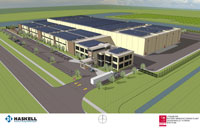 In August 2009, Saft, a world specialist in the design and manufacture of high-tech batteries for industry, was awarded a $95 million grant from the U.S. Department of Energy (DOE) under the American Recovery and Reinvestment Act. The funding is for a high-volume manufacturing plant to build advanced lithium-ion cells and batteries for military hybrid vehicles, aviation, smart grid support, broadband backup power and energy storage for renewable energy. Alternative energy is a designated high-impact sector in Florida, and the grant provided an opportunity to leverage federal funding with state and local resources to encourage growth and diversification of Florida’s burgeoning alternative energy sector.
In August 2009, Saft, a world specialist in the design and manufacture of high-tech batteries for industry, was awarded a $95 million grant from the U.S. Department of Energy (DOE) under the American Recovery and Reinvestment Act. The funding is for a high-volume manufacturing plant to build advanced lithium-ion cells and batteries for military hybrid vehicles, aviation, smart grid support, broadband backup power and energy storage for renewable energy. Alternative energy is a designated high-impact sector in Florida, and the grant provided an opportunity to leverage federal funding with state and local resources to encourage growth and diversification of Florida’s burgeoning alternative energy sector.
Florida and Jacksonville began working with Saft long before the DOE grant was awarded and faced significant competition on the project. State and local partners worked aggressively to create a package containing cash grants, tax incentives (credits, abatements, refunds and exemptions) and workforce training grants to secure it.
Company officials found that the transportation infrastructure and the workforce are well suited for a major battery manufacturing plant. This project represents a tremendous addition to Cecil Commerce Center—continuing the redevelopment of Cecil Field, a former Naval Air Station.
The total estimated cost of the project is around $200 million, and it will bring roughly 279 jobs to the area during the next six years. Construction is scheduled to be completed before the end of 2010.
“Florida is stepping onto the world stage as a major marketplace for advanced energy technologies,” said Governor Charlie Crist. “The presence of this state-of-the-art manufacturing facility ensures that competitive battery solutions will be imminently available to the U.S. and world markets from the Jacksonville facility.”
Alliant Techsystems (ATK)
Iuka, Mississippi
In February 2009, Alliant Techsystems (ATK) announced it would begin manufacturing composite structures for next-generation commercial aircraft as well as composite aircraft engine components at its facility in Iuka, Mississippi. Composite materials are critically important in the production of next-generation aircraft because their strength and light weight deliver fuel efficiencies and operability unavailable using traditional metal manufacturing.
The expansion to accommodate these new operations, a $175 million investment by ATK, will result in the creation of more than600 high-wage jobs over the next eight years while retaining the 176 jobs currently at the facility.
"Expanding ATK's presence in Mississippi with its talented workforce, strong university system and pro-business environment is the right strategic move for our company," said Dan Murphy, chairman and CEO. "In this partnership we harness a shared world-class expertise and experience in advanced composite engineering and manufacturing that will generate long-term, sustained, economic growth for both the state and our company.”
As a global leader in the defense and aerospace industries, with operations at more than 50 facilities in 21 states, Alliant Techsystems’ decision to locate these high-tech operations in Mississippi positions the state as an ideal location for companies in this sector.
Gray Swoope, executive director of the Mississippi Development Authority, summed up the long-term impact of ATK’s expansion decision, “This announcement further confirms Mississippi is a prime location for companies involved in advanced material-making processes for the aerospace industry. ATK’s decision to locate these operations in Mississippi will provide a future for many of our college graduates in this field.”
The State of Mississippi has assisted ATK with this expansion by providing funding for building infrastructure improvements.
General Electric
Van Buren Township, Michigan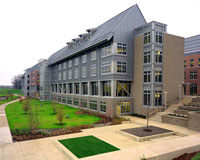 General Electric promised Michigan a serious infusion of economic development when it announced in June 2009it would open a major research center in Van Buren Township. Delivering on that promise, the multi-national corporation has opened the Advanced Manufacturing Technology and Software Center, making use of an existing facility. The $100 million investment is expected to create in excess of 1,200 high-paying jobs over five years, plus 1,600 indirect jobs.
General Electric promised Michigan a serious infusion of economic development when it announced in June 2009it would open a major research center in Van Buren Township. Delivering on that promise, the multi-national corporation has opened the Advanced Manufacturing Technology and Software Center, making use of an existing facility. The $100 million investment is expected to create in excess of 1,200 high-paying jobs over five years, plus 1,600 indirect jobs.
The 100,000-square-foot center will employ experts in GE's software development, data architecture, networking, business intelligence and program management sectors, and will also serve as a training hub for IT workers. Manufacturing technologies for GE's renewable energy, aircraft engine, gas turbine and other products will also be developed.
The state of Michigan is providing $74 million in incentives over the next 12 years to support the center, which is expected to yield $146 million in income taxes and other revenue over the same period.
Governor Jennifer Granholm noted that the new center will bring high-skilled jobs to Michigan, which has been reeling from the recession and the downturn in the auto industry. The project will provide opportunity for hundreds of engineers and professionals, some former employees of the auto industry, and serve as a catalyst to new business for local firms in engineering, testing, prototyping, design and product development.
"If we can tap into some of the great labor resources in the state, we will be headed for even more success," GE Chairman and CEO Jeff Immelt said. He continued,” Michigan is a great location for a technology center because of its world-class engineering, technical talent and public officials who understand that investing now will create tomorrow’s leading positions in information technology, clean energy and transportation.”
Wiregrass Power LLC
Valdosta, Georgia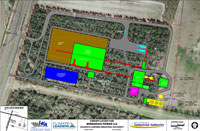 Wiregrass Power, LLC plans to locate a new 40-megawatt renewable energy power plant in Valdosta. The company will invest $110 million over the next three years as the plant comes online. Thirty new jobs will be created to operate the biomass electric generating plant and 125 new jobs will be created to provide direct contract support.
Wiregrass Power, LLC plans to locate a new 40-megawatt renewable energy power plant in Valdosta. The company will invest $110 million over the next three years as the plant comes online. Thirty new jobs will be created to operate the biomass electric generating plant and 125 new jobs will be created to provide direct contract support.
The Wiregrass Electric Generating Facility will be developed on 22.1 acres of land next to the Mud Creek Wastewater Treatment Plant. The project is planned for commercial startup in 2012, and groundbreaking is scheduled for 2010.
Electricity from the Wiregrass project will be sold to Georgia utilities and put to the electric grid via a 115-kilovolt transmission line adjacent to the project site. Wiregrass will bring additional renewable energy to Georgia’s electricity mix. The biomass project will be powered by clean wood waste that would otherwise go unused and sludge from the nearby wastewater treatment plant. By consuming an estimated 12 tons of sludge daily, Wiregrass will prevent disposal of that same volume of sludge in landfills, creating an additional environmental benefit.
The project will make beneficial use of reclaimed water, the byproduct of the waste water treatment plant. Using approximately 750,000 gallons per day of the reclaimed water will eliminate an external source of cooling water and reduce the discharge of reclaimed water into Mud Creek. The City of Valdosta will create a revenue stream from sale of the reclaimed water, the return of waste water and potentially the sale of potable water.
Bob Turner, Wiregrass project director and director of project development for Sterling Energy Assets, which wholly owns Wiregrass Power LLC, said, “This renewable energy project will help satisfy basic [energy] needs while also producing environmental benefits, diversifying the state’s energy mix and creating local economic benefits such as 25 permanent new jobs and increased tax revenue.”
Foster Farms
Farmerville, Louisiana The Northeast Region of Louisiana typically has the highest unemployment and poverty rates in the state. To make matters worse, between 2005 and 2008, three of the region’s major employers closed, leaving approximately 2,500 people unemployed.
The Northeast Region of Louisiana typically has the highest unemployment and poverty rates in the state. To make matters worse, between 2005 and 2008, three of the region’s major employers closed, leaving approximately 2,500 people unemployed.
But the region’s story began to change in 2009.
Kicking off one of the most successful years in economic development for Northeast Louisiana on record, Foster Farms purchased a closed poultry processing plant in Farmerville, Louisiana. Its purchase and reopening of an existing facility will create more than 1,100 new jobs with a corresponding payroll of over $24 million at full capacity, and saved the local grower and supplier base, all while avoiding the loss of over $100 million in state and local tax revenues over the next 10 years.
At the plant’s ribbon-cutting ceremony, Governor Bobby Jindal said, “For every worker, every grower here, or employee in the community that faced losing their job and their fortune, I want to ask you all to join me in recognizing Foster Farms and their commitment to rolling up their sleeves and investing here to get this community back to work. Our people are strong and resilient. And when we get knocked down, we aren’t looking for a hand out, but a hand up. With some hard work, we have stood back up today. It would have been easier to just throw in the towel here. We knew we faced an uphill climb. But we joined you in the fight, and we fought until we were victorious.”
Accounting for both direct and indirect economic effects, the Farmerville facility will lead to 3,970 total Louisiana jobs by 2011 and $379 million in annual economic output.
The Raymond Corporation
Greene, New York
The Raymond Corporation, an electric lift truck manufacturer, is the largest employer in the Southern Tier of New York State, so when it was considering consolidating its manufacturing facilities, it was critical that the company remain in the area, securing the region’s stability through job creation and business investment dollars.
Although Raymond considered other locations outside of New York State for the consolidation of its manufacturing facilities from Brantford, Ontario, Canada, it ultimately chose to continue to grow in the town of Greene in Chenango County, New York and build upon the strong talent base that has been established there over the years. New job opportunities were created (initially adding 100 new jobs), while preserving 740 existing good-paying manufacturing jobs.
The consolidation project is expected to be responsible for several hundred more jobs to be created for the area as the economy improves.
This project has resulted in a successful public/private partnership that will secure the company’s future in Chenango County and leverage economic prosperity in New York State. A significant monetary investment went into making The Raymond Corporation expansion a success. The company’s total investment was $42.3 million. It received a $2.25 million grant from Empire State Development and a $750,000 grant from the New York State Office of Community Renewal.
The Raymond Corporation President and CEO Jim Malvaso said: “Supporting U.S. manufacturing is essential to economic growth in our country. The state’s partnership allows us to continue developing innovative solutions to best serve our customers and our talented workforce.”
Brooklyn Navy Yard Development Corporation
Brooklyn, New York The historic Brooklyn Navy Yard is cruising into the future with an expansion and revitalization “green” development project. The 220,000-square-foot Green Manufacturing Center will be a multi-tenanted facility focusing on green manufacturing businesses requiring no fewer than 10,000 square feet.
The historic Brooklyn Navy Yard is cruising into the future with an expansion and revitalization “green” development project. The 220,000-square-foot Green Manufacturing Center will be a multi-tenanted facility focusing on green manufacturing businesses requiring no fewer than 10,000 square feet.
The building will include one of New York State’s largest solar panel installations and will adaptively re-use the concrete foundations and steel frames of three, connected late 19th century World War II machine shops. The three buildings that comprise the center will be converted into a new $30 million Leadership in Energy and Environmental Design (LEED) Silver certified complex employing up to 300 full-time green collar jobs, many of which will go to people who live in the surrounding communities—communities that are in need of jobs. In addition, local business leaders say the Green Manufacturing Center will spur growth in public housing, and local business owners are confident it will give their businesses a financial boost.
“There are areas near the Navy Yard where nobody wanted to live a few years ago,” said New York City Mayor Michael Bloomberg. “Now you have families and businesses committed to reducing crime, improving schools and bringing more culture to the area. Of course, that kind of pride, confidence and hope filters out to the surrounding area.”
President and CEO of the Brooklyn Navy Yard Development Corporation Andrew H. Kimball said: “With cutting-edge green infrastructure investments and a rapidly growing cluster of green manufacturers, the Brooklyn Navy Yard has become a national model for sustainable industrial parks.”
The Brooklyn Navy Yard is one of the most environmentally sustainable urban industrial parks in the nation.
Red Ventures
Lancaster County, South Carolina Red Ventures, an Internet marketing and sales company, has expanded its operations and located its headquarters in the Indian Land community in Lancaster County, South Carolina. The company expects to invest more than $20 million in its new facility and generate 1,000 new high-paying jobs over the next five to seven years.
Red Ventures, an Internet marketing and sales company, has expanded its operations and located its headquarters in the Indian Land community in Lancaster County, South Carolina. The company expects to invest more than $20 million in its new facility and generate 1,000 new high-paying jobs over the next five to seven years.
“We are pleased to expand into Lancaster County. The area has an excellent business environment that provides a great fit for our growing company and gives us access to a talented labor force. Red Ventures has experienced strong growth in recent years and we look forward to continuing that growth in South Carolina. We appreciate all the support we’ve received from state and local officials and look forward to growing our relationship with Lancaster County and South Carolina in the years ahead,” said Mark Brodsky, chief financial officer for Red Ventures.
“Here’s a great example of what can happen when the county and the state work together. It’s all about pulling together with the common goal of creating jobs,” said State Senator Mick Mulvaney. “Every job counts—100 this year and reaching 1,000 in the years to come. This is how we are going to rebuild Lancaster, one business at a time.”
The Senator’s prediction holds promise: Red Ventures’ investment is a strong example of South Carolina’s ability to attract and grow knowledge-based jobs. The new location in Lancaster County brings new opportunity to a county whose unemployment rate has hovered between 18 and 19 percent in recent months.
The company’s decision to grow and create 1,000 new jobs in the state is also an indication that the business-friendly climate and pool of talented labor force is working to attract high-tech, high-growth companies offering exceptional job opportunities.
Bannon Automotive, LLC
Onondaga County, New York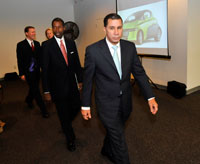 Answering the call of New York Governor David A. Paterson to set as a priority investment in “clean and renewable energy to spur economic development and rebuild our economy,” Bannon Automotive LLC was driven to locate its plug-in electric vehicle manufacturing site in Clay, New York, a suburb of Syracuse in Central New York. The company will invest $26.6 million to open a manufacturing facility in Onondaga County, creating 250 new full-time jobs in three years.
Answering the call of New York Governor David A. Paterson to set as a priority investment in “clean and renewable energy to spur economic development and rebuild our economy,” Bannon Automotive LLC was driven to locate its plug-in electric vehicle manufacturing site in Clay, New York, a suburb of Syracuse in Central New York. The company will invest $26.6 million to open a manufacturing facility in Onondaga County, creating 250 new full-time jobs in three years.
Bannon will use technology based on that developed by REVA Electric Car Company Private, Ltd. (based in Bangalore, India) to build REVA’s NXR model. The NXR is a lithium-ion powered electric car, suitable for urban driving.
While Clay was ranked number 59 of 100 Best Places to Live by CNNMoney.com, the Syracuse area’s economy has faced challenges over the past decades, so the infusion of 250 new jobs is very significant to the community. And it is not hard to imagine that this number of jobs will likely increase—as our nation continues its dedication to green initiatives, the community is not only well positioned to attract similar green and high-tech business, Central New York will be established as a leader in green technology in both domestic and global markets, revitalizing its economy for years to come.
Indeed, New York Assemblyman Al Stirpe observed that Bannon Automotive is the type of business that fits the vision of Central New York. “It matches our manufacturing expertise with our growing focus on green industries. In addition, it is a wealth generator by selling electric vehicles outside of our region and state and bringing that revenue to Central New York.”
Crane Co.
Williston, South Carolina
Crane Co. will consolidate its North American vending operations into its Dixie-Narco facility in Williston, South Carolina. The consolidation of the North American vending operations to South Carolina has the potential to increase employment at the Barnwell County facility by 1,000 jobs over the next five years. Crane Co. will invest approximately $20 million over time in its Williston facility to increase operations.
State officials pointed out that in today’s highly competitive global economy, the state’s ability to attract jobs of this magnitude and grow the existing businesses is critical, noting that while this is always a good development wherever it happens in South Carolina, in metropolitan areas, 1,000 additional jobs can often be absorbed into the community without too many people outside of those jobs noticing.
For towns like Williston, however, whose population has been slowly shrinking and approaching only 3,000 people, it can literally mean the difference of survival for the community. Marty Martin, executive director, Barnwell County EDC, highlighted the fact that the Crane Co. consolidation decision was either going to create hundreds of new jobs for the area or lead to the plant closing, adversely affecting approximately 500 local workers.
The Crane Dixie Narco expansion is the first project under a new, historic, multi-county revenue-sharing agreement among the four counties in the SouthernCarolina Alliance.
South Carolina Governor Mark Sanford remarked that, “The announcement that Crane Co. will consolidate its North American manufacturing operations to its Dixie-Narco facility in Barnwell County is also a reminder of the importance of focusing the state’s efforts on improving the business climate with fundamental reforms that encourage economic growth. As well, the focus on regulatory efforts like workers’ comp reform, tort reform and lower taxes, has created an environment that allows the existing businesses, like Dixie-Narco, to be more competitive during these challenging economic times.”
Chicken of the Sea
Lyons, Georgia
Chicken of the Sea International is locating its first domestic tuna canning operation in Lyons, Toombs County, Georgia, investing $20 million and creating 200 new jobs in this rural part of the state.
Due to its distance from the Savannah Ports, which Chicken of the Sea will utilize for its shipping purposes, Toombs County was at significant logistical disadvantage in comparison to the other Georgia communities as well as the South Carolina communities under consideration. But the community was creative in designing an incentive package to overcome those hurdles; as well it had to be given the state of its economy.
This part of Georgia has been hit hard by the economic downturn. Toombs County is a Tier 1 county, a ranking assigned to counties in Georgia with high unemployment rates, low per capita income and a high percentage of residents with incomes below poverty level. Despite the availability of greater job tax credits in these counties, it is typically harder for them to attract new jobs.
This location is also a pre-eminent example of a trend beginning to manifest itself in Georgia: that of companies “backshoring” their international manufacturing operations to the U.S. The facility in Toombs County is the first tuna-canning facility to open in the U.S. in many years, and demonstrates that Georgia is a state whose business assets can enable a company to successfully backshore its operations.
Sam Polk, chairman of the Toombs County Development Authority looked to the future, saying, “The decision reflects on Toombs County’s efforts to improve economic opportunities in our region. The jobs and investment will greatly assist in our efforts to strengthen the industrial base.”
CGI Group Inc.
Troy, Alabama CGI Group Inc., a leading provider of information technology and business process services, didn’t even put Troy, Alabama on its short list of considerations for the location of its new facility. Yet, after granting the Alabama state economic development team just two hours initially to demonstrate how Troy could meet their site selection criteria, CGI was ultimately won over.
CGI Group Inc., a leading provider of information technology and business process services, didn’t even put Troy, Alabama on its short list of considerations for the location of its new facility. Yet, after granting the Alabama state economic development team just two hours initially to demonstrate how Troy could meet their site selection criteria, CGI was ultimately won over.
In late September of 2009, together with Alabama Governor Bob Riley, CGI announced the opening of a new Center of Excellence in Pike County in Troy, Alabama. This 14th global delivery center in CGI's network will bring 300 new jobs to Pike County. “The hundreds of new jobs coming here will mean more opportunities and brighter futures for so many Alabama families," said Governor Riley. "When I signed our new economic incentives law in May, I said it would help us take our economic development efforts to a higher level and allow us to compete for jobs in the technology industry. Now we're seeing that new law is working to strengthen our economy."
"This new Center of Excellence in Pike County will allow CGI to continue to create highly skilled, quality jobs in rural America," said Donna Morea, president, CGI US.
Troy Mayor Jimmy C. Lunsford concurred, "CGI will offer high-technology jobs for many of our young people, while also bringing home many who in the past left Troy for employment. I commend CGI for investing in rural America where communities have had the vision to invest in IT infrastructure. CGI will have [a] great impact on our community as we build a long and fruitful partnership."
Mercury Marine Inc.
Fond du Lac, Wisconsin![]() Mercury Marine, which was founded in Wisconsin, has provided jobs and investment in the state for over 70 years. When the recent global economic downturn adversely affected the outboard motor company and management began looking at cost-saving measures—including shutting down operations in the state and moving them to Oklahoma—literally the entire state—from Governor Jim Doyle to county and city officials—stepped up and worked together to provide incentives to help save both the company and the jobs of the 2,000 individuals it employs—the loss of which would have struck a devastating blow to the Fond du Lac area. The city, county and state are working in tandem to ensure that the iconic company will have the time, talent and funding needed to regroup and compete in a global market.
Mercury Marine, which was founded in Wisconsin, has provided jobs and investment in the state for over 70 years. When the recent global economic downturn adversely affected the outboard motor company and management began looking at cost-saving measures—including shutting down operations in the state and moving them to Oklahoma—literally the entire state—from Governor Jim Doyle to county and city officials—stepped up and worked together to provide incentives to help save both the company and the jobs of the 2,000 individuals it employs—the loss of which would have struck a devastating blow to the Fond du Lac area. The city, county and state are working in tandem to ensure that the iconic company will have the time, talent and funding needed to regroup and compete in a global market.
The state incentive package totals $70 million through a combination of tax credits, grants and forgivable loans. The local incentive package includes $3 million from the City of Fond du Lac. Up to $50 million will be available in the form of a low-interest, performance-based, collateralized loan from Fond du Lac County with guarantees provided by both the City of Fond du Lac and Fond du Lac County. The loan proceeds are to be used for new engine development; the relocation of some of the Stillwater Oklahoma manufacturing positions to Fond du Lac; and a retirement incentive payment to International Association of Machinists and Aerospace Workers (IAM).
Referring to Governor Doyle and a difficult negotiations process, IAM Midwest Territory General Vice President Philip J. Grubseer said, “He provided resolution at a time when many people thought there could be no resolution.”
Related Agencies
- Mississippi Development Authority
- Valdosta-Lowndes Development Authority
- Commerce Chenango Economic Development
- Fond du Lac County Economic Development Corporation
- Northeast Louisiana Economic Alliance
- Van Buren Township
- Lancaster County Economic Development Corporation
- Barnwell County Economic Development Commission
- Southern Carolina Alliance
- Toombs County Development Authority
- Pike County Economic Development Corporation
